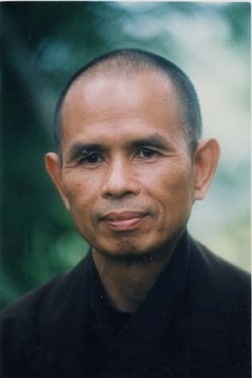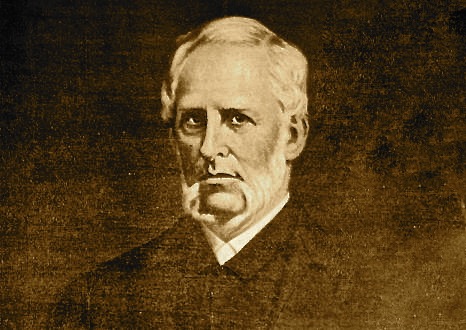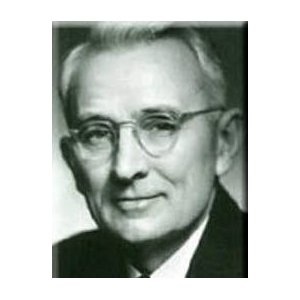Learning to Breathe

There are few skills more valuable than learning to breathe properly. And I say that as someone who used to have a terrible way of moving air in and out of myself!
For the last three decades I have routinely offered to teach patients and students how to help themselves with simple breathing exercise. If you are interested, I have recorded some of my methods.
Sadly some people have scant interest in learning. I recently saw a patient with a chronic problem with anxiety. I asked her if anyone had tried to help her to help herself with some breathing techniques. She told me, rather tartly, that I was “talking “Bull ****” and that she just wanted me to give her a “narcotic.”
Oh well, you can’t help everyone.
“Breath is the bridge which connects life to consciousness: which unites your body to your thoughts. Whenever your mind becomes scattered, use your breath as the means to take hold of your mind again.”
–Thich Nhat Hanh (Vietnamese Buddhist Monk, 1926-)
A Poison of Life

“Anxiety is the poison of human life; the parent of many sins and of more miseries. In a world where everything is doubtful, and where we may be disappointed, and be blessed in disappointment, why this restless stir and commotion of mind? Can it alter the cause, or unravel the mystery of human events?”
–Tryon Edwards (American Theologian, 1809-1894)
A Perspective on Worry

“Do you remember the things you were worrying about a year ago? How did they work out? Didn’t you waste a lot of fruitless energy on account of most of them? Didn’t most of them turn out all right after all?”
–Dale Carnegie (American Educator and Author, 1888-1955)
Causes of Fatigue

“One of the chief causes of fatigue is boredom. Our fatigue is often caused not by work, but by worry, frustration and resentment. We rarely get tired when we are doing something interesting and exciting.”
–Dale Carnegie (American Educator and Author, 1888-1955)
Meditation, Stress and Self-Regulation

There is progressively more evidence that meditation can have measurable effects on behavior and the brain. The trouble is that some of the results have conflicted, mainly because of the different types of meditation and different measurement protocols. So I was very interested to see some new research in this week’s issue of the Proceedings of the National Academy of Sciences, by a team of researchers from China collaborating with renowned experts at the University of Oregon, who have developed an approach for neuroscientists to study how very brief meditation training might improve a person’s attention and response to stress.
The study itself was done with undergraduate students in China. The experimental group received five days of meditation training using a technique called integrative body-mind training (IBMT), which was developed in China n the early 1990s.
IBMT is a rapid mental training method that aims at inducing a state of alert restfulness using breathing and guided imagery.
The control group received five days of relaxation training. Before and after training both groups took tests involving attention and reaction to mental stress.
The experimental group showed greater improvement a test of attention that was designed to measure peoples’ ability to resolve conflict among stimuli. Subjects were stressed by doing mental arithmetic.
At the beginning of the experiment both groups showed an elevated release of cortisol following the mathematical task, but after training the experimental group showed less cortisol release. This probably indicates an improvement in stress regulation. The experimental group also showed lower levels of anxiety, depression, anger and fatigue than the control group.
The next stage in the research will involve direct measurements of brain function.
Although IBMT is described as a form of meditation, it may be inducing something slightly different from, say, Zen meditation. The important point is that it is possible to produce measurable physiological changes in just five days, and this will make it much easier to examine the dynamic effects of hypnosis, relaxation and this technique on brain function.
I would also be grateful for any readers who have more information abut the precise details of IBMT, and whether training in the precise techniques is available outside China.
I shall keep you posted as new data emerge.
“Peace can be reached through meditation on the knowledge which dreams can give. Peace can also be reached through concentration upon that which is dearest to the heart.”
–Patanjali (Indian Philosopher said to be the Compiler of the Yoga Sutras, Dates Unknown)
“Through meditation and by giving full attention to one thing at a time, we can learn to direct attention where we choose.”
–Eknath Easwaran (Indian-American Spiritual Teacher, Professor and Author, 1910-1999)
“Meditation is not to escape from society, but to come
back to ourselves and see what is going on. Once there is
seeing, there must be acting. With mindfulness, we know
what to do and what not to do to help.”
–Thich Nhat Hahn (Vietnamese Buddhist Monk, 1926-)
“A meditator keeps his mind open every second. He is constantly investigating life, investigating his own experience, viewing existence in a detached and inquisitive way. Thus, he is constantly open to truth in any form, from any source, an at any time.”
–Henepola Gunaratana (a.k.a. Bhante G., Sri Lankan Buddhist Monk, 1927-)
Mother’s Dreams

Having a baby is one of the Really Big events in life, and it is no surprise that both pregnancy and birth have a major influence on the structure and content of a mother’s dreams.
It is also not surprising that many of the dreams have a strong negative component to do with maternal responsibility, or depicting the new infant in dreamed situations of danger. These dreams can cause anxiety that can spill over into wakefulness. A new study from Montreal published in the journal Sleep has added something new: these kinds of dreams may be accompanied by complex sleep behaviors such as motor activity, speaking and expressing emotions.
The study from the Sleep Research Centre at the Hôpital du Sacré-Coeur de Montréal in Montréal, Québec, Canada, focused on 273 women, who were divided into three groups: postpartum, pregnant, and women who had not given birth. The subjects completed questionnaires about pregnancy and birth factors, personality and sleep. They were also interviewed and asked about the prevalence of recent infant dreams and nightmares, associated behaviors, anxiety, depression and other psychopathologic factors.
- The percentage of women in all groups who recalled dreams ranged from 88-91%
- Postpartum and pregnant women recalled infant dreams and nightmares with equal prevalence, but more postpartum women reported they contained anxiety (75%) and the infant in danger (73%) than did pregnant women (59%)
- Motor activity was present in twice as many postpartum (57%) as pregnant (24%) or non-pregnant (25%) women
- Expressing emotion was more prevalent among women without children (56%) than postpartum women (27%), but was not different from pregnant women (37%)
- Speaking while asleep was equal among the three groups (12-19%)
- Behaviors were associated with nightmares, dream anxiety and, among postpartum women, post-awakening anxiety (41%), confusion (51%), and a need to check on the infant (60%)
Most pregnant women experience daytime fatigue primarily because the quality of their sleep tends to be worse. Physical discomfort and awakenings are common, particularly during the third trimester.
Snoring often increases during pregnancy and obstructive sleep apnea may develop as the pregnancy progresses.
Two other sleep disorders that are more common during pregnancy are restless legs syndrome (RLS) and sleep related leg cramps. RLS affects nearly 25% of pregnant women and may be related to low iron stores. Leg cramps occur in about 40% of pregnant women, although they usually clear up after delivery. They tend to go away after delivery.
It is easy to understand these dreams from an evolutionary perspective. Though there is also a small literature on mothers who get intuitive flashes about their distressed infants. I have followed this work for many years. When I was an infant I chocked on a banana, and my mother who was some way off “saw” it happening in her mind’s eye and rushed in to find a very small RP who had already turned blue. She swore to her dying day that the tale was true.
And I still cannot eat bananas.
Running Scared

One very promising approach to understanding many psychological problems is to look at them from an evolutionary perspective: to see if clinical observations can be re-framed around the evolution of the brain.
Our brains are a hodgepodge of bits and pieces that have evolved over millions of years. We still have regions that evolved in reptiles, as well as the stunningly complex neocortex that has been developing over the last few hundred thousand years. Most of the time the different systems and circuits cooperate, but that cooperation falls apart if people are under the influence of alcohol or dugs, or in different types of neurological and psychological problems. Then the older and more “primitive” regions of the brain take over. That is typically what happens when a drunk wants becomes irritable or wants to fight. It is also what can happen in people who have sustained damage or have abnormal development of the frontal lobes of the brain. Alternatively it may happen if something over-stimulates the primitive regions of the brain.
Colleagues in London have been doing experiments with a computer game that could be immensely valuable for people with panic attacks and some types of anxiety disorders.
Working with healthy volunteers, Dean Mobbs and colleagues at the Wellcome Trust Centre for Neuroimaging at University College, London, used a Pac Man-like computer game, in which subjects were chased through a maze by an artificial predator. If caught, they received a mild electric shock.
At the same time, brain scans measuring blood flow showed that when the predator was a long way off, lower parts of the prefrontal cortex area of the brain were active. This region is associated with complex decision-making, such as planning an escape.
But when the predator moved closer, activity shifted to the periaqueductal gray area, which is responsible for rapid response survival mechanisms such as fighting, flighting or freezing.
This shows us that the brain’s response to fear changes as a threat gets nearer: the more impulsive region takes over from the decision-making regions as a threat looms closer. A problem in the balance between the two regions could explain some anxiety disorders. Most sufferers report that they “know” that their fears are illogical, but they react anyway. So the key question is what is it that shifts the balance of activities between the forebrain and midbrain regions of the brain?
This new research is published in the journal Science, and builds on similar findings in animals, including tests on rats that were performed at the University of Colorado in Boulder and published in 2005. In those experiments rats with a non-functioning prefrontal cortex did not cope with stress as well as those with normal brains.
From an evolutionary perspective, maintaining the correct balance between the different regions of the brain that handle fear help animals to avoid or escape predators.
There are some situations where we only have to be wary about potential threats, but other times we need to react without thought. The closer a threat, the more impulsive will be your response. If the threat is large enough and close enough we lose any semblance of free will and just take action.
Just as happens when someone is in the throes of a severe anxiety attack.
Acupuncture and Anxiety During Medical Procedures

Over the years I have become impressed with the increasing research on something close to my own heart: how to use the best of scientific medicine in conjunction with less orthodox approaches. And, for that matter, when each is best left on its own.
I have mentioned that a few years ago I had to have surgery for a potentially serious problem. The surgeon – widely regarded as one of the best in this neck of the woods – was stunned by the speed of my recovery.
“I have seen it with my own eyes, “ He said, “But how did you do it?”
“Well,” I said, “You are an excellent surgeon. But I also some outside help: acupressure, homeopathic remedies, qigong and three prayer groups. We call it Integrated Medicine. You may think that it’s odd, but that’s what I did.”
“Oh no,” he said, “I have been in practice for over 35 years: I trust my senses far more than I trust some graph with p values on it!”
Although anxiety has never been one of my problems, I was pleased to see two new publications on the use of acupuncture to reduce anxiety during medical procedures.
A randomized controlled study was carried out to determine whether a combination of auricular and body acupuncture is effective as an adjunctive treatment for pre-procedural anxiety and pain, in 56 patients undergoing lithotripsy (ultrasonic destruction of kidney stones). In the acupuncture group, pre-procedural auricular acupuncture was combined with intra-procedural electro-acupuncture stimulation, while in the control group both treatments were sham. Patients in the acupuncture group were less anxious pre-procedure than those in the sham group and they also used a significantly smaller amount of analgesic during the procedure than those in the sham control group. Patients in the acupuncture group also reported significantly lower pain scores on admission to the recovery room.
Meanwhile an Italian study has found that patients undergoing cataract removal are less anxious after receiving acupuncture. People underwent phacoemulsification, in which the cloudy eye lens is emulsified with an ultrasound probe, before being aspirated and replaced by an artificial lens. The procedure is carried out under topical anesthesia while the patient is awake and can therefore provoke significant anxiety. In this prospective randomized double-blind controlled trial, anxiety levels were assessed before and after surgery in three groups (no acupuncture, true acupuncture and sham acupuncture) of 25 patients. Preoperative anxiety levels were significantly lower only in the true acupuncture group. The difference in postoperative anxiety levels between the real acupuncture and no acupuncture groups was also significant.
These studies are particularly interesting in the light of a recent analysis of the published research on acupuncture and anxiety, that did not include these studies. There is not much research out there, but what we have suggests that it may perhaps help with generalized anxiety disorder. The best evidence is indeed in using it to allay anxiety before, during or after surgery, though we still need a lot more research to be sure.
I have heard people say that using acupuncture like this somehow belittles it: that an ancient and self-contained system should not become the handmaiden of Western medicine.
That is only half true. First, traditional Chinese medicine was developed at a time and placed very different from today. Human beings have changed radically in the intervening centuries. That is why acupuncturists in modern China are discovering and developing new way to treat people that do not always conform to the precepts laid down hundreds of years ago.
Second, many of us have failed to recognize the treasures in our midst. Acupuncture and acupressure are two of them. If using them together with conventional medicine is the best way for people to come to know of them, that is all to the good.
There are several other similar studies that will be coming out in the next few months, and I shall keep you informed.
Rescue Remedy and Acute Anxiety

I have been using the Bach Flower Essences since the 1970s and they can be very helpful. Since living in the United States I have added the American Flower Essences to my repertoire. We have even helped cats, dogs and horses with them. The whole idea that soaking a flower in water and exposing the infusion to sunlight could have any therapeutic benefit seems absurd. Except that the remedies so often work. The trouble is that there is so little decent research on them.
A new study conducted by researchers at the University of Miami School of Nursing in conjunction with The Sirkin Creative Living Center has suggested that Rescue Remedy, a mixture of five of the Bach Essences, may be effective for the treatment of anxiety.
Rescue Remedy, manufactured by Nelsons, contains five flower essences, each of which is said to have a specific psycho-spiritual action:
- Rock Rose to alleviate terror and panic
- Impatiens to mollify irritation and impatience
- Clematis to help with inattentiveness
- Star of Bethlehem to ease shock
- Cherry Plum is said to calm irrational thoughts
The study examined the product for the reduction of acute situational stress. A double-blind clinical trial comparing a standard dosage of Rescue Remedy against a placebo of identical appearance was conducted in a sample of 111 individuals aged 18 to 49. The Spielberger State-Trait Anxiety Inventory (STAI) was administered before and after the use of Rescue Remedy or placebo. The results suggest that Rescue Remedy may be effective in reducing fairly high levels of situational anxiety. The results were just published in the latest edition of Complementary Health Practice Review. The abstract should be available online in the near future.
It will be interesting to see if this result can be replicated with this kind of acute anxiety, as well as other types of stress or anxiety. The STAI is a good choice for a first study: it is simple and attempts to capture the key features of the acute anxiety as well as the long-term propensity to it. It can be hard for people to give reproducible answers when they are acutely anxious, and it is important to know about the inter-rater reliability of the people dong the evaluations.
Recently the Rescue remedy has been produced as a spray as well as the original drops, and we have been making extensive use of it in combination with other approaches to treatment.
As I explain in Healing, Meaning and Purpose, there are good reasons for thinking that different types of treatment work at different levels of an individual. The flower essences seem to work at the level of the Informational Matrix of the body: it is an “information medicine,” that can act very quickly. We have seen scared horses – and people – calm down within seconds after being given the right remedy.
When it works, it can be remarkable.
A Sense of Coherence

One of the central concepts of Integrated Health and Integrated Medicine is the idea of coherence. This is not a new idea, but was developed in new ways and formalized by the American/Israeli sociologist Aaron Antonovsky. It is such an important concept that I have mentioned something about it before
Antonovsky developed his theory of health and illness, which he termed Salutogenesis. This model was described in his 1979 book “Health, Stress and Coping”, followed by “Unraveling the Mystery of Health”
in 1987. I remember its publication, and the strong feeling amongst many of us interested in Integrated Health that it was a most important
contribution to understanding the relationship between health and
illness. A key concept in Antonovsky’s salutogenic theory concerns the way in which
specific personal dispositions serve to make us more resilient
to the stressors that we encounter in daily life.
Antonovsky identified
these characteristics, which he said helped a person better cope and remain healthy by providing “a sense of coherence” (SOC) about
life and the challenges we all face. Measures of Sense of Coherence have
been developed and tested in more than 30 countries.
The SOC is defined as: “The extent to which one has a pervasive, enduring though dynamic, feeling of confidence that one’s environment is predictable and that things will work out as well as can reasonably be expected.”
So it tries to capture our sense of optimism and control.
SOC has three components:
- Comprehensibility
- Manageability
- Meaningfulness
Comprehensibility is the extent to which events are perceived as making logical sense, that they are ordered, consistent, and structured. Manageability is the extent to which a person feels they can cope. Meaningfulness is how much one feels that life makes sense, and challenges are worthy of commitment.
Professor Antonovsky believed that a person with a strong SOC is more likely to feel less stress and tension, and to have confidence that he or she can meet the demand placed upon them. The SOC was developed to apply across cultures, and versions of the questionnaire have been used in over 30 countries.
The SOC is not the only factor in a predicting outcomes in a person’s life: it interacts with a person’s natural coping style, upbringing, financial assets, mood and social support. The strength and availability of each is a major determinant in the development of a strong or weak SOC.
Research in the growing field of psychoneuroimmunology
has supported many of the basic assertions of the relationship between
emotions and health contained in Antonovsky’s theory of Salutogenesis.
I saw some research (NR691) at the 2007 Annual Meeting of the American Psychiatric Association in San Diego, California last month that was based on a sample of 976 working people in Denmark, found that people with a high sense of coherence perceive less stress and experience less psychological disturbance in the work place.
This all makes very good sense, and it also gives us yet another line of approach for helping people deal with the stresses of life and gain personal mastery.
I shall talk about using this information in the future.






